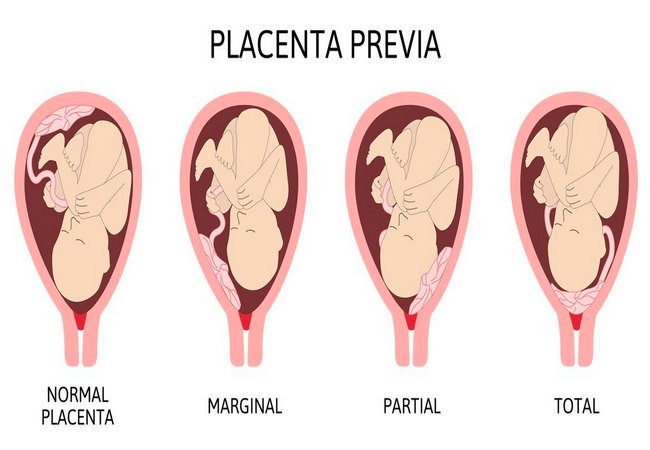Preeclampsia Signs, Symptoms, Management, Complications
Definition of Preeclampsia or Pre Eclamptic Toxaemia:
Preeclamptic toxaemia or preeclampsia is a multisystem disorder of unknown etiology characterized by development of HTN to the extent of 140/90 mm of Hg or more with edema or proteinuria or both after the 20 weeks of pregnancy in a previously normotensive and non pro teinuric patient.
Preeclampsia is a pregnancy complication characterized by high blood pressure and signs of damage to another organ system, often the kidneys. Preeclampsia usually begins after 20 weeks of pregnancy in a woman whose blood pressure had been normal.
Pre-eclampsia (PE) is a disorder of pregnancy characterized by the onset of high blood pressure and often a significant amount of protein in the urine.
You can read: Pregnancy Sign, Symptoms and Confirmation Test

Definition of Severe Pre-Eclampsia:
A persistent rise of systolic BP more than 160 mm of Hg or diastolic BP more than 110 mm of Hg with the following symptoms and signs is termed as severe pre-eclampsia.
- Persistent severe epigastric pain,
- Cerebral or visual disturbances,
- Oliguria (<400 ml urine / 24 hours)’,
- Protein excretion of> 5 gm/24 hours’,
- Platelet count <1,00,000 / mm3 6. HELLP syndrome,
- Retinal haemorrhage, exudates or papilloedema,
- Intra-uterine growth restriction of the fetus’,
- Pulmonary oedema.
Preeclampsia Sign, Symptoms:
Clinical Features of Preeclampsia:
Symptoms of Preeclampsia:
1. Swelling of the foot (early).
2. Gradually the swelling may extend ot the face, abdominal wall, vulva and even the whole body.
3. Alarming symptoms:
- Headache (frontal or occipital),
- Disturbance of sleep,
- Diminished urinary output (<500 ml in 24 hours),
- Epigastric pain,
- Blurring vision, photophobia.
Signs of Preeclampsia:
- Rise of blood pressure: Persistent rise of blood pressure more than 140/90 mm of Hg is significant.
- Oedema: Visible oedema over the ankles on rising from bed in the morning is pathological.
- Abnormal weight gain: A rapid weight gain of> 2.2 kg in a month or 1 pound in a week in the later part of pregnancy is important.
- Pulmonary oedema.
- Abdominal examination reveals evidences of IUGR may result from chronic placental insufficiency.
Investigations of Preeclampsia:
1. Urine exam:
- Heat coagulation test to detect proteinuria,
- 24 hour urinary protein,
- Urine for RME and C/S.
2. Bloods exam:
- Serum uric acid: >4.5 mg% indicates PET.
>5.5 Mg% → severe case
- Blood urea: Normal or slightly raised
- Serum creatinine
- Coagulation factors: All factors↓, FDP↑
3. USG (to detect fetal state and twin)
4. X-ray (to detect fetal state and twin)
5. LFT (Liver function test)
Management of Preeclampsia:
Principles of management of pre-eclampsia:
- To relive oedema.
- To reduce blood pressure & reduce the risk & chance of malignant hypertension.
- No specific therapy for proteinuria which automatically subsides with the correction of hypertension.
A. General treatment:
- Urgent hospitalization
- Adequate bed rest
- Diet: Salt restricted and diet should be containing adequate protein and calorie.
B. Specific treatment:
1. Antihypertensive: Following drugs alone or in combination may be given.
- Oral drugs: a-methyl dopa, Nifedipine, Hydralazine
- Parenteral: Labetelol, Hydralazine etc.
2. Prophylactic anti-convulsant therapy: In case of severe preeclamptic toxaemia prophylaxis of convulsion is maintained by MgSO4 at a lower dose.
3. Sedatives: Diazepam 5 mg at bed time.
4. Maintaining of progress chart:
- Blood pressure-4 times a day,
- Fluid intake output chart,
- Urine for protein,
- Fetal monitoring.
5. Ophthalmic examination
6. Assessment of fetal well being
C. Obstetric Management:
1. Obstetric management is depending upon the following features:
- Severity of preeclampsia,
- Duration of pregnancy,
- Response to treatment.
2. If maternal condition and response to the treatment is satisfactory: Pregnancy may be continued up to term.
3. If maternal condition and response to the treatment is not satisfactory: Immediate termination of pregnancy either by– Induction of labour or Caesarian section.
D. Care of the patient during puerperium:
- Close observation of the patient for at least 48 hours.
- Anti-hypertensive drugs should be continued if diastolic BP>100 mm Hg.
- Patient should be kept in the hospital till the BP is brought down to a safe level and proteinuria disappears.
Complications of Severe Preeclampsia (PET):
A. Immediate complications:
(a) Maternal:
1. During pregnancy:
- Eclampsia (2%),
- Ante partum haemorrhage (abruptio placenta),
- Oliguria and anuria (Acute renal failure),
- Cardiac failure,
- HELLP syndrome,
- Dimness of vision and even blindness,
- Premature labour.
2. During labour:
- Eclampsia,
- Postpartum haemorrhage,
- Shock.
3. During puerperium:
- Ecalmpsia (within 48 hours),
- Puerperal sepsis,
- Shock.
(b) Fetal complication:
- Intrauterine death (IUD),
- Intrauterine growth retardation (IUGR),
- Birth asphyxia,
- Prematurity.
B. Remote complication:
- Residual hypertension,
- Recurrent preeclampsia.
More questions related to this article:
- Define preeclampsia,
- What is preeclampsia?
- Define pre eclamptic toxaemia.
- Define severe pre-eclampsia.
- Write down the clinical features of preeclampsia.
- Mention the sign, symptoms and diagnostic features of preeclampsia (PET).
- How will you diagnosed severe preeclamptic patient?
- How will you manage a case of preeclampsia?
- Write down the management of a case of 38 weeks pregnancy with preeclampsia.
- Write down the complication of PET.
- What are the complications of severe preeclampsia?
- Describe the complication of preeclampsia.











